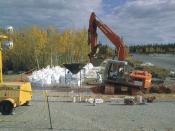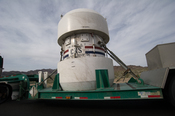Allison Mann
5/16/13
Nuclear Waste
Nuclear waste is an ongoing problem, not only in the United States, but worldwide. Scientists have determined that so far burying nuclear waste deep underground is our best option for the time being to store it, however many scientists are looking into better ways to deal with the nuclear waste problem, as well as looking into more efficient and more environmentally friendly sources of energy.
Nuclear fission is the process of splitting a large nucleus into smaller nuclei in order to release energy. Nuclear fission uses small amounts of uranium in order to make large amounts of fuel and energy. However, nuclear power is a better option than fossil fuel energy because nuclear fission can be isolated as a concentration as opposed to directly releasing the emissions from burning fossil fuels. Even though nuclear waste doesn't initially harm the environment with improper storage and disposal can.
Nuclear waste is formed by uranium-235 when it is heated to a temperature hot enough to boil water to make steam so that a turbine can be rotated to cause a generator to generate electricity and power cities, which are light water reactors. The uranium is put into rods that are heated. The high level nuclear waste that we are concerned about is the fuel pellets that are left after the uranium is in the reactor. The half-life of uranium-235 is 7.0 x 108 years, which means this uncommon isotope of uranium will be around for a very long time in order for it to completely go away. This number gives us an idea of how long nuclear waste can be around years after we produce it, also just how important it is to store securely for a long period of time.
The chemical reaction of uranium-235 can vary:...


